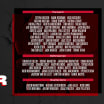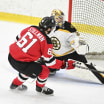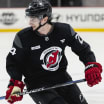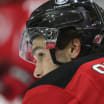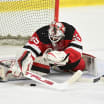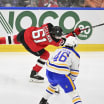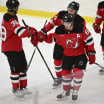It only takes one good season for a player to make a name for himself.
Sometimes it's just that onecampaign which remains memorable; something like, "The Year He'll Never Forget."
Try this trio of New Jersey Devils-past on for size and seasons:
1982-1983. HECTOR MARINI: NY Islanders scouts discovered this native of Timmville, Ontario and liked the young forward's hustle and grit. "We thought he had a shot at making the big team," said Isles general manager Bill Torrey who picked Hector 50th overall in the 1977 Entry Draft.
Marini then cut his puck teeth in the (now defunct) Central Hockey League. Isles coach Al Arbour finally gave him a varsity shot in the 1980-81 season. It was a 14-game cup of coffee and plus nine playoff games; good enough to get his name on The Stanley Cup but not good enough to have Torrey keep in Uniondale.
Torrey traded Marini to New Jersey prior to the 1982-83 season. It was in time for the new NHL franchise to battle through its debut campaign. "It was a tough year for us," said Devils starting goalie Glenn (Chico) Resch, "but Hector made the best of it."
Three Single Season Standouts | SUNDAYS WITH STAN
Stan Fischler takes a look at three Devils players that had strong standout seasons while in New Jersey
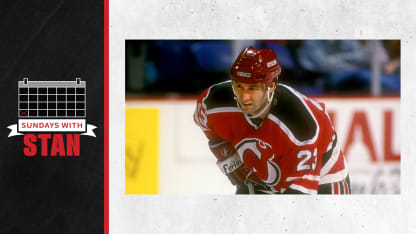
He sure did. Within his first six games as a Garden Stater, he scored two-game-winning goals. "Hector was a fighter, too," added Resch, "and that was something our team needed - the kind of spirit he had."
Marini produced 45 points in his 77 games as a Devil; not to mention 105 penalty minutes. Interestingly, New Jersey won a grand total of 17 games that maiden season and 17 is the number of goals Hector scored.
"I was picked to represent our team in the 1983 All-Star Game," Marini recalled, "and that was quite a thrill."
His fifth place in team scoring placed him behind teammates Steve Tambellini, Don Lever, Jeff Larmer and Bob MacMillan.
"Hector impressed me with his spark," remembered Devils fan Emma Miller. "For that first season, he was one of several who showed that the team was capable of finding respectable scorers."
Marini didn't have the goods to remain a long-term major leaguer and eventually wound up in the minors. Unfortunately, his career was cut short on Dec. 4, 1985 while he was playing for Maine in the AHL.
A slapshot deflected off a stick and the puck hit him in the left eye. According to historian Andrew Podnieks, "Doctors had no choice but to remove his eye and Marini had no choice but to retire."
But those who saw him play in that one special year for New Jersey always fondly will remember Hector the hustler.
1987-1988. BRUCE DRIVER: Overshadowed by Hall of Famers Scott Stevens and Scott Niedermayer, the University of Wisconsin's All-Star defenseman shunned the limelight while playing efficiently and with confidence. When the Devils franchise still resided in Denver, Driver was drafted by the Colorado Rockies 105th overall in 1981.
He chose instead to play two more years with the Badgers, finally joining the Devils for the 1983-84 season, New Jersey's second in the bigs. It was to be the first of a dozen years for Bruce as a reliable, efficient New Jersey blueliner.
One scouting report put it this way about him: "He's not a scorer, not a rock on defense, not big and strong and tough. But he is a good, solid defenseman."
During New Jersey's early, non-playoff years, Driver remained the cornerstone of the blue line corps and finally was rewarded in the 1987-88 campaign.
"It was a memorable year for a lot of things," said Bruce, "but the big one was that we made the playoffs for the first time, and on the final night of the season."
Not only that but they knocked the rival NY Rangers out of the postseason in the process. Driver was a significant contributor putting up 55 points in 74 games, a 15-year career high.
That spring the Devils reached the Eastern Conference Final before losing to Boston in the seventh game. During that unforgettable playoff run, Bruce contributed three goals and seven assists.
1989-1990 - SLAVA FETISOV: Shortly after Devils owner Dr. John McMullen hired Lou Lamoriello in 1987 to run the team, the pair huddled over what amounted to an international espionage move. Although the political Iron Curtain still was thick, the Devils duet was determined to spirit a couple of Soviet stars out of Mother Russia and into a New Jersey uniform.
"I went over to Moscow several times," Lou recalled, "but there was a heck of a lot of red tape to cut before I could get results."
But in the summer of 1989 the results were there; alive, well, and in the form of two Russian defensemen, Slava Fetisov and Sergei Starakov. An overflowing Meadowlands press conference was orchestrated by Dr. McMullen and Lamoriello announcing the signings and that both players were expected to make the Devils varsity.
Fetisov was the star of the show. During his prime years playing for the Soviets, Fetisov had been favorably compared to Boston Bruins star Bobby Orr who many critics considered the best player in hockey history.
However, Fetisov's problem as a Devil was clearly that he was past his prime. Also, it was debatable how easily he'd fit into the NHL style once the 1989-90 season began. Adjusting to the long and arduous NHL schedule would be a prime challenge.
"I didn't know what to expect," said Fetisov. "The NHL ice rinks were smaller than the Olympic-sized big ice I'd been used to, so that was part of my adjustment. I just did the best I could."
He did very well in that first year as a Devil. As one reporter covering Slava's debut put it, "Fetisov had to curtail his rushes and get used to not playing most of an entire game. But he never looked out of place."
In that rookie season, Slava adjusted to the Devils like a perfectly meshed gear. He recorded career highs including eight goals and 42 points.
"Put it this way," concluded Lamoriello, "I'm glad we got him!"
----------------------------------------------
HONORABLE MENTIONS:
1994-1995 - RANDY MCKAY AND THE CRASH LINE: The chemistry was perfect - Mike Peluso and Bobby Holik rounded out a trio that included scoring, hitting and overall dominance - call it intimidation - leading to the Devils' first Stanley Cup triumph. Obtained from Detroit, McKay turned into one of the biggest surprises. His clutch goal-scoring was more than the Devils ever had expected.
1999-2000 - LARRY ROBINSON: With Robbie Ftorek behind the bench, the Devils played competently until an episode in Detroit. After an injury to Jay Pandolfo resulted in no penalty, an enraged Ftorek picked up a bench and tossed it on the ice. The incident didn't sit well with Lou who fired Robbie with only nine games remaining. Robinson was made head coach and led the team to its second Stanley Cup. At the time he was the first interim coach to head a championship team. The Blues' Craig Berube duplicated the feat in 2019.
2005-2006 - BRIAN GIONTA: Just about every scout and coach who ever saw Brian Gionta for the first time reacted the same way: "Too small." From high school hockey through college and into the minors, it was the same. And each time, the native of Greece, New York proved them wrong.
But, after the 2004-2005 season a few media types in New Jersey had doubts. Gionta delivered 21 goals but just eight assists. Then came a season-long NHL work stoppage before labor peace finally was restored and a full 2005-2006 season could be played. Skating on a line with Patrik Elias and Scott Gomez, Gionta set a franchise record 48 goals! Nor was he "too small."
2011-2012 - DAVID CLARKSON: As one-shot wonders go, Clarkie was a pip. Remember, his image was something akin to ice cop and fourth-liner. But in one mind-boggling season, The Smiling One starred both in the regular campaign and playoffs. He finished with the one and only 30-goal season of his NHL life. Better still, he tallied the series-winning red light against Philadelphia in the second playoff round. Then again, Devils fans will tell you that their favorite Clarkson thing was his tossing Rangers pest Sean Avery around like a rag doll one night before a delighted East Rutherford crowd.




